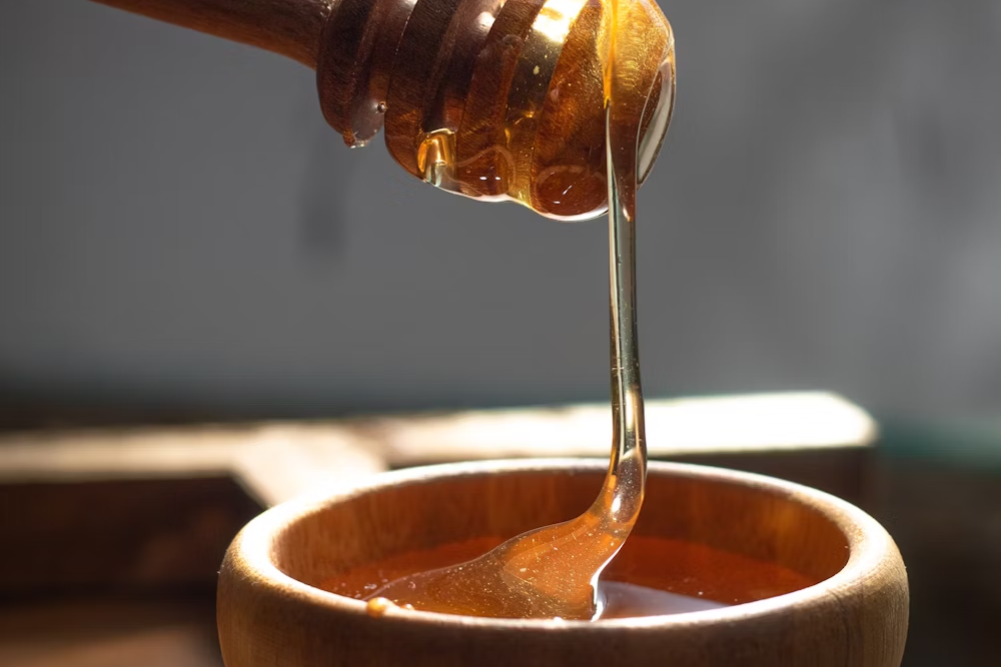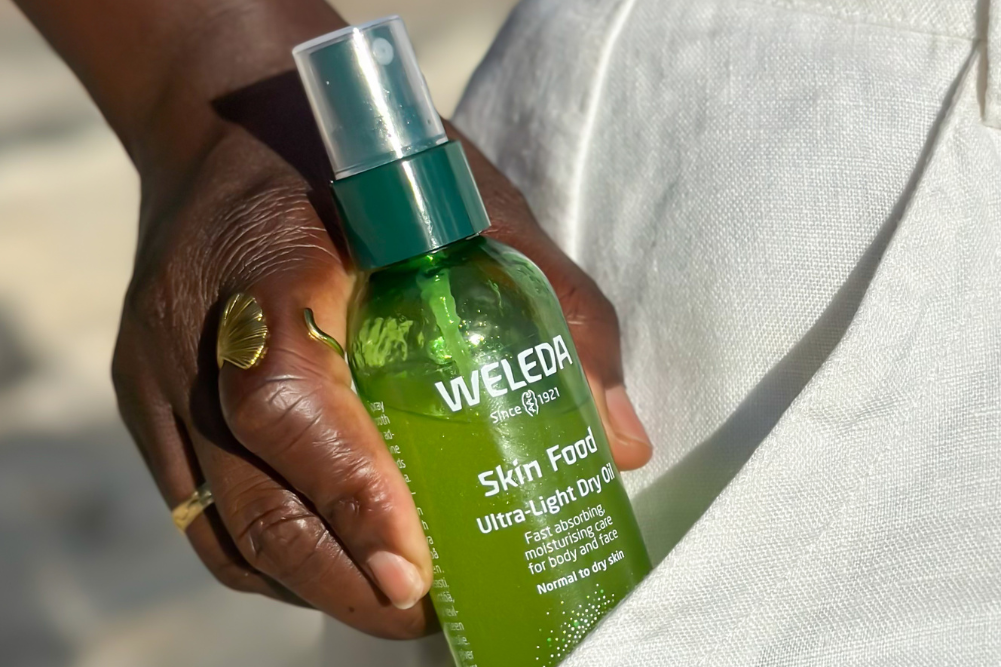In a nutshell: a guide to using nut oils in your beauty routine
Nutritious nut oils are food for the skin. Some contain agents that nurture and heal, helping to lock in the skin’s moisture or add shine and fullness to hair. Depending on the type of nut, many can offer natural healing properties for dermatological conditions such as eczema or psoriasis.
Humans have been using nut oils in a variety of applications for thousands of years. An early Greek physician said walnuts combined with onion, salt and honey could heal bites from dogs or men. It’s said that King Tutankhamun went to the afterlife with a handful of almonds. In Roman times, newly married couples were liberally sprinkled with nuts (and dried fruits) and the bride would remove her veil as part of a ceremony.
Nowadays, nuts are nibbled raw, added to sweet and savoury dishes and used as oils in a range of natural health and cosmetic products. The beauty of many nut oils is you probably already have some on your pantry shelf.
Macadamia oil
With its delicious buttery texture, you’ve probably used macadamia oil in dressings and cooking. It’s high in mono-unsaturated fats, which are known to lower blood cholesterol. Did you also know it’s a versatile skincare product?
This light nutrient-dense oil is found in the fruits of the macadamia tree nut (Macadamia integrifolia) and it’s native to the east coast of Australia. They’re now grown in parts of Asia and the USA. Macadamia nuts are chockfull of heart-healthy mono-unsaturated fats and antioxidants.
When extracted, the amber-coloured oil is rich in palmitoleic acid, an omega-7 mono-unsaturated fatty acid, oleic and linoleic acids, and also phytosterols. It nourishes the skin and is also a non-comedogenic, meaning it doesn’t clog pores.
Indigenous Australians called macadamia nuts gyndl or jindilli; they were a delicacy and were traded for other foods. The first plantation was established in the late 1800s and now macadamia nuts are an Australian industry worth more than $280 million annually, with crops exported to more than 40 countries.
Macadamia oil has a plethora of uses, is inexpensive, easy to acquire from food stores and has a shelf life of around two years.
Tips for using as a beauty product
- Try it as a shaving or lip balm. It’s absorbed gently into the skin without leaving an oily residue. Oleic acid is anti-inflammatory and can soothe chafed skin.
- Macadamia oil is high in a rare antioxidant called squalene, so it feeds the skin, helping to smooth fine lines and other signs of ageing. Just warm a little between your fingertips and apply directly to your skin.
- Apply a little macadamia oil to sunburn to reduce inflammation and redness (French women swear by it).
- Macadamia oil is a great makeup remover. All you need is a small cotton pad to remove makeup and give your skin a satiny fresh glow.
Hazelnut oil
Humans have been nutty about hazelnuts for more than 10,000 years. Archaeologists discovered evidence they were a food source dating back to the Middle Stone Age in Sweden, Denmark and Germany.
Hazelnut oil helps preserve colouring agents of colour-treated hair. It also has a protective factor against sun damage for hair.
Hazelnuts are derived from the hazel tree (Corylus), which has a lifespan of over 70 years. It’s endemic to Asia, North America and parts of Europe. Hazelnuts can be eaten raw by the handful, ground or roasted, and they’re commonly used in sweet dishes. To produce a kilo of oil, it takes approximately 2.5kg of nuts. The nuts have a nutrient-dense profile — they’re loaded with vitamins A, B and E, selenium, calcium and manganese.
Hazelnut oil, when extracted from the nuts, is a versatile natural beauty product. It’s rich in oleic and linoleic acids. Despite it having a drier feeling than some oils when applied to the skin, it’s more suitable for oily skin. As it contains vitamin E, it’s wonderful for the skin and there’s some evidence suggesting it may help with skin hyperpigmentation.
To maintain its viability, hazelnut oil is best stored in the fridge, where it will retain its freshness for 9–12 months. It’s available online and from select health-food stores.
Tips for using as a beauty product
- Hazelnut oil smooths and hydrates skin. Its light, non-greasy texture means it’s an ideal massage oil used by professional beauty therapists. It’s also a beautiful body oil. Apply to your skin after showering for smooth, supple skin. Mix a little hazelnut oil to balms and body butters for an indulgent treat.
- Hazelnut oil helps preserve colouring agents of colour-treated hair. It also has a protective factor against sun damage for hair. Mix a little with olive oil and sweet almond oil, comb through and rinse off after 15 minutes.
- Did you know hazelnut oil contains a natural sunscreen? In fact, many sunscreens contain it. Try mixing a drop or two of hazelnut oil into your daily moisturiser for a little added UV protection.
Brazil nut oil
This rich nut oil is extracted from the Brazil nut tree (Bertholletia excelsa). Bees that live in the Amazon rainforest pollinate the flowers, and the bees in turn depend on the orchid Coryanthes vasquezii that grows high in the rainforest canopy. It’s a seemingly complicated ménage-à-trois that means, as a result, Brazil nuts grow only in specific places, including Brazil and parts of Peru, Columbia and Bolivia.
The Brazil nut is a seed but is commonly referred to as a nut. It contains magnesium and phosphorus and is an excellent source of the trace element selenium. This is a rich antioxidant that boosts the immune system and may be protective against some cancers. While Brazil nuts are nutritious to eat, the oil is also a nutritious skin food. Brazil nut oil is rich in oleic and linoleic acids, two fatty acids that are unsung heroes in fighting dry skin.
Unlike some other nut oils, Brazil nut oil isn’t one most households would already have in their pantry. It has a shelf life of around two years and can be purchased either online or through health-food stores.
Tips for using as a beauty product
- Nutrient-rich Brazil nut oil works effectively as a moisturiser on dry skin. It’s a humectant, which means it also helps to retain moisture. Warm a few drops between your fingertips and gently rub into cleansed skin.
- Brazil nut oil is a common ingredient in shampoos and conditioners; it can be used in its natural form as a hair mask or treatment for dry, brittle hair. Some advocate using it as a leave-in conditioner, or you can gently wash out.
- This nut oil is also a natural treatment for pimples and acne, as well as the associated inflammation, as it contains high amounts of zinc.
Almond oil
Almonds are delicious to snack on, and the oil derived from them is a natural beauty powerhouse. It’s one of the most prolific oils used in the cosmetics and natural health industry. From massage oils to hair treatments, soaps, ointments, bath oils and makeup, take a look in your bathroom and you’ll probably find a product containing sweet almond oil.
From massage oils to hair treatments, soaps, ointments, bath oils, and makeup, take a look in your bathroom and you’ll probably find a product containing sweet almond oil.
The oil is extracted from the nuts of the almond tree (Prunus dulcis), which originated in central Asia and the Middle East. Now it’s grown worldwide in regions that have a Mediterranean climate, including Australia.
Sweet almond oil is rich in vitamins E, B7 (biotin) and A, as well as high in oleic and linoleic acid. As a result, sweet almond oil has a host of beauty benefits. It’s an emollient, promotes smoother and suppler-looking skin and has humectant properties, so it helps the skin retain moisture. It has a light, non-greasy texture, is gentle on the skin and is suitable for most skin types. It’s also useful to reduce hypertrophic scarring, and in treating eczema and psoriasis. Store the oil in a cool, dark place for around 12 months. You can buy online and at some pharmacies and health-food stores.
Sweet almond oil’s curious cousin, bitter almond oil, can be lethal if ingested in large doses as it contains prussic acid, which turns into cyanide. You’ll find it in Italian amaretto, marzipan and some confectionery, but it’s mostly used as an essential oil. In the Roman era, bitter almond oil was ingested sparingly as a means of ridding the body of intestinal parasites.
Tips for using as a beauty product
- It can be useful in acne treatment and may also help with any subsequent scarring. Mix sweet almond oil with a few drops of tea-tree oil or lemongrass oil, then gently rub into affected areas. Note: Tea-tree oil can irritate, so use sparingly and test it on a small area first.
- Almond oil is an effective hair mask to nourish dry, sun-damaged hair. Warm the oil and gently massage through from root to tip, cover your hair and leave it for at least 30 minutes, then wash and condition.
- It can be used on pets, too. If your happy hound has dry skin, try rubbing in a little sweet almond oil to nourish your dog’s skin.
- Rub sweet almond oil into the base of your nails to soften cuticles and strengthen nails.
Walnut oil
This little-known oil is starting to make waves in the beauty industry. There are several different types, including the English walnut, which originated in Persia, and the less common California black walnut. Now walnuts are grown virtually all over the world, including in Australia.
In ancient times, the Greeks called the humble walnut, karyon, which roughly translates to kernel or seed. This is because of the oval seed and the tiny brain-shaped nut inside.
English walnuts grow on walnut (Juglans regia) trees, and the oil is extracted from the nuts (seeds). Eating walnuts is helpful for lowering cholesterol as well as improving heart health and brain health. They’re a great lunchbox snack.
Walnut oil has a thick consistency and contains powerful antioxidants, so it fights free radicals to help slow the ageing process and is therefore beneficial for skin. The oil is rich in vitamin E, selenium, magnesium, phosphorus, zinc and some B group vitamins.
Like many other oils, walnut oil doesn’t have a long shelf life (around six months) and should be stored in a dark dry place to help prevent it going rancid. It’s available online and at selected stores.
Tips for using as a beauty product
- Walnut oil is beneficial for dandruff; gently rub a little into the scalp. It can also help with psoriasis — just dab on affected areas.
- As an eye treatment, massage the oil just under the eye area, where it can help to soothe the sensitive under-eye skin.
- Walnut oil is an effective carrier oil for massage. Mix with a few drops of a fragrant essential oil such as lemon or sandalwood.
How Brazil nuts are saving the Amazon
Deforestation of the Amazon rainforest is leading to rising temperatures and subsequent seasonal changes, which is impacting on wild Brazil nut trees bearing fruit. Some experts say continued deforestation and the consequent climatic impacts on temperatures will lead to an ecological tipping point that will cause half of the rainforest to die off.
In some areas, co-operatives mostly run by women are being established to turn the Brazil nuts that grow wild in the forest into a cash crop. It has increased the value of the nuts twenty-fold. If those who live within the rainforests can derive real economic benefit from a Brazil nut cash crop, they’ll see that as a viable alternative to deforestation and clearing the land to earn money from cattle farming. The money stays right there in the Amazon, while some nuts are donated to local schools and cosmetic companies purchase the manufactured oil.
Now farmers are talking about planting more trees — a win for local communities who live in the Amazon, and a win for the planet, which is dependent on the mighty Amazon.








